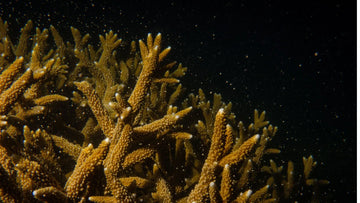Corals reproduce after the mass release of sperm and eggs at the same moment that, upon fertilization, will create larvae, the basis of all corals. This larva is attracted to light, necessary for its survival, and can roam the shallow ocean for a maximum of 30 days until it finds a suitable surface to settle and develop. When the larva encounters the necessary climatic and nutritional conditions to grow, it will begin transforming into a polyp that attaches to the seabed. This is how coral birth occurs.
At the moment of larva-to-polyp transformation, a process of multiplication through identical copies begins, capable of colonizing the area where that single larva settled, creating a skeleton firmly attached to the base. This solid base, capable of binding dissolved calcium in the sea onto its tissues, forms rigid structures that over decades will create the rocky structure known as a coral reef.
The Foundation for Coral Reef Growth
As corals die, they leave behind their calcareous remains from their skeletons as a foundation for the growth of other corals. This provides the base and ideal conditions for coral larvae to find a suitable place for their growth. Thus, both the foundation and the interior of the largest existing reefs today, such as the Great Barrier Reef, are formed by "coral corpses" that existed hundreds and thousands of years ago.





















